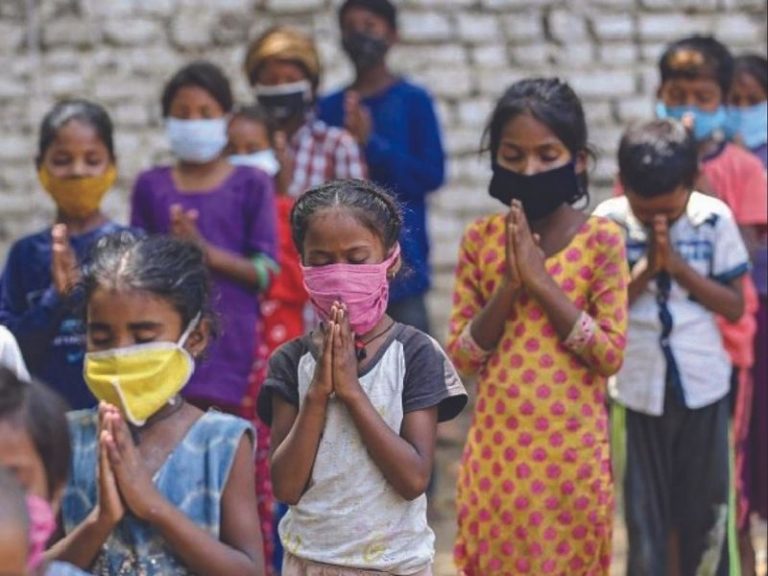Delhi: Deferred price
Autar Delhi (Delhi)

Delhi school children: Omicron uncertainty
As schools in delhi reopened after an unprecedented closure of 73 weeks (arguably the most prolonged schools closure worldwide) because of the Covid-19 pandemic, there’s looming uncertainty about another lockdown following the discovery of Omicron — a new variant of the novel Coronavirus.
Meanwhile on November 17, the Mumbai-based Pratham Education Foundation (PEF, estb.1994) — the country’s most respected independent assessor of student learning outcomes — released its Annual Status of Education Report (Rural) 2021 or ASER 2021.
The study based on phone-surveys conducted by 3,500 Pratham volunteers with 76,706 households in 581 rural districts covering 25 states in September-October this year, reports a notable exodus from private to government schools. The percentage of rural children in private schools has decreased from 32.5 percent in 2018 to 24.4 percent in 2021 with Uttar Pradesh (pop.215 million) showing the highest increase of 13 percent in government schools.
Much of this reverse migration into public education is attributed to financial distress of parents, closure of affordable schools, free-of-charge education in government schools and parental migration. The report also notes the proportion of out-of-school children which had sharply increased from 1.4 to 4.6 percent in 2020, has remained static in 2021.
ASER 2021 notes that although ownership of smartphones, which enables a modicum of learning from home, has doubled from 36.5 percent in 2018 to 67.6 percent in 2021, youngest children have little access to them. And while state governments’ textbook distribution record has been good, children’s learning outcomes have plunged sharply during the pandemic lockdown.
Ever since PEF began publishing its ASER surveys in 2005, its USP has been actual testing of reading and maths capabilities of a representative sample of rural children in 25 states and several Union territories. Although because of the nationwide lockdown, ASER volunteers didn’t conduct nationwide learning assessments in 2021, a statewide assessment conducted in Karnataka in early 2021 indicates a sharp decline in children’s learning outcomes.
The percentage of class III students who can read class I textbooks has plunged from an already low 41.8 percent in 2018 to an abysmal 24.2 percent. Moreover, the percentage of class III children who can recognise double digit numbers (11-99) has declined from 78.3 percent to 60.7 percent.
“The devastating impact of the Covid pandemic on education had become obvious within the first six-eight months after its outbreak. But there’s been complete bankruptcy of decision-making. The Union Budget 2021-22 slashed the outlay for education when the parliamentary standing committee had recommended an outlay of Rs.2 lakh crore for school education. Against this, the total outlay for education in 2021-22 — the pandemic year — is Rs.93,224 crore,” says Prof. Praveen Jha, professor of economics at the Jawaharlal Nehru University, Delhi.
Among sentient educationists and academics, there’s unanimous agreement that because of the most prolonged lockdown worldwide of India’s 1.6 million schools — including pre-primaries — loss of learning is certain to prove calamitous and will further widen urban-rural, rich-poor gaps. Especially, in the absence of any coherent strategy from the Union education ministry or state governments to recover children’s learning loss.
Prof. Anita Rampal, former dean of department of education at Delhi University, recommends participatory group learning, open experiments, stories, narrations and stripped curriculums while ensuring high teacher morale. “All this and more is critical to recover the undoubtedly huge learning loss that India’s children have suffered during the pandemic lockdown,” she says.
But the alarm — perhaps panic — prompted by the world’s most protracted schools lockdown doesn’t seem to bother the neta-babu brotherhood that rules the nation from the national capital. The price of the lockdown will be paid several elections later by children of the Covid pandemic era.
Also Read:Delhi: Beneficial examinations reform
















Add comment